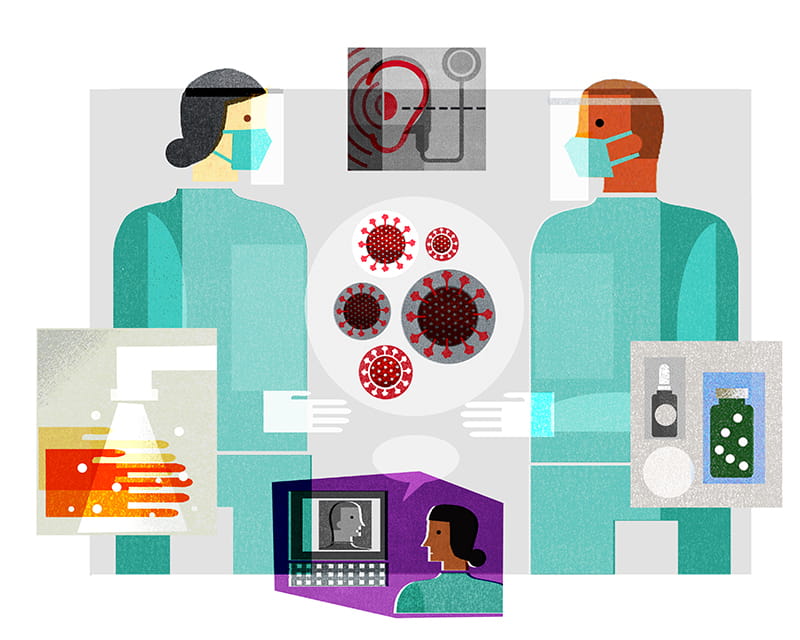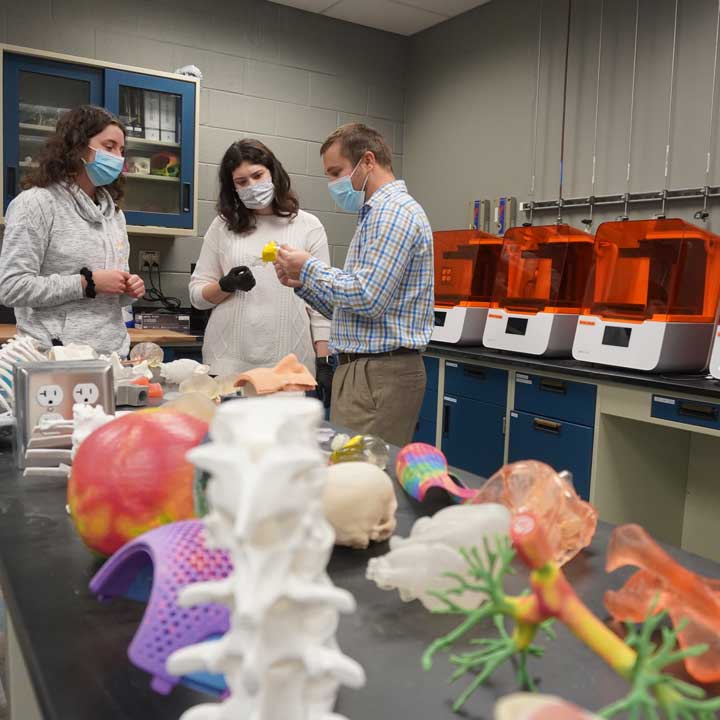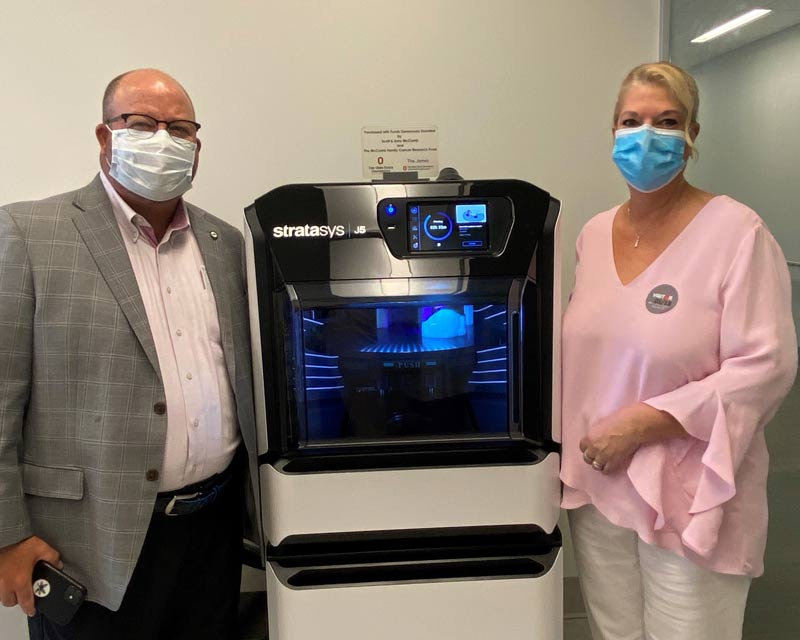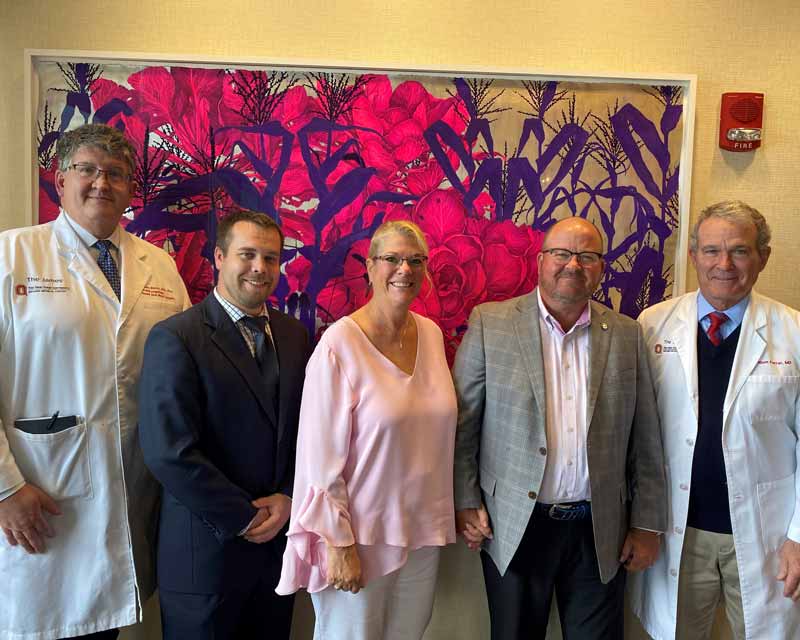
2020 Annual Report
 New 3D medical model printing technology, funded by gifts from donors Scott and Amy McComb, has the potential to improve care for patients across the entire health care spectrum at The Ohio State University Comprehensive Cancer Center – Arthur G. James Cancer Hospital and Richard J. Solove Research Institute (OSUCCC – James).
New 3D medical model printing technology, funded by gifts from donors Scott and Amy McComb, has the potential to improve care for patients across the entire health care spectrum at The Ohio State University Comprehensive Cancer Center – Arthur G. James Cancer Hospital and Richard J. Solove Research Institute (OSUCCC – James).
“It’s not easy to get conventional research funding for this type of macroscopic translational research,” says Kyle VanKoevering, MD, director of the Medical Modeling, Materials and Manufacturing (M4) Lab at The Ohio State University and head and neck surgeon at the OSUCCC – James. “Without the McCombs’ philanthropy, we’d only have access to small grants and our progress would have never happened with the same speed.”
Amy and Scott McComb started giving to medical causes at Ohio State in 2016. Scott serves as chairman, president and chief executive officer at Heartland Bank in Whitehall, Ohio.
The catalyst? Friends invited them to join a Buckeye Cruise for Cancer. They were struck by what they learned and survivor stories. The avid Buckeye fans decided that night to start giving toward cancer research.
“We wanted something to sink our teeth into and that would get our kids involved,” Amy says. “We hope they’ll continue it once we’re not here.”
The McCombs established the McComb Family Cancer Research Fund with an initial $250,000 gift over five years to support innovative research and technology. Each year, they distribute grants from that fund to projects that can move research and cancer treatment forward.
The couple are passionate about supporting efforts that are new and innovative and providing seed funding to help launch large initiatives.
 “We like early-developing technologies and research that helps others understand and buy in,” Scott says.
“We like early-developing technologies and research that helps others understand and buy in,” Scott says.
As part of their first gift, the McCombs worked with two immunotherapy researchers. The experience was so great that they decided to make a second $250,000 gift for another five years. That’s when they were introduced to Dr. VanKoevering and the M4 Lab.
“On the cancer medical side, the surgeons sometimes get into quandaries where they can’t quite figure out a solution,” Amy says. “In the M4 Lab, the engineers can come in, help diagnose the issue and come up with alternatives in a whole different light.”
For nearly a decade, Dr. VanKoevering has worked to marry engineering and medicine. His passion grew after joining the Ohio State Department of Otolaryngology – Head and Neck Surgery in 2020 and partnering with the Ohio State College of Engineering’s Center for Design and Manufacturing Excellence. Together, they’ve harnessed existing 3D printing resources to provide personalized medicine to patients in real time.
Grants from the McCombs’ fund were used to purchase two $60,000 scanners that can create detailed images of a patient’s head, neck and jaw. These images help pinpoint the exact location of cancer. Traction and momentum around the scanner opened opportunities for Dr. VanKoevering to expand even more. He went to the OSUCCC – James with plans of adding a multicolor, multi-material printer onsite at the hospital.

The James found space for a consultation lab to showcase the 3D medical modeling and give surgeons and patients direct access to the service. The McCombs were all in and authorized spending $100,000 for the multicolor printer, which creates models that show all distinct parts of the anatomy, including tumors.
In just a few months, the lab was organized, staffed and open. In fact, it’s already been used to print several multi-component complex models for patients.
Traditionally, surgeons study 2D images as they prepare for surgery. Then they mentally create 3D images in their heads, Dr. VanKoevering says. Often this approach works, but sometimes surgeons are surprised by what they find in the operating room.
“That is where the impact is made,” Dr. VanKoevering says. “The 3D models help us see that little nuance we might miss otherwise. It can help us plan to position the patient differently or make an incision in another location.”
The end results can be highly impactful. Planning with 3D medical models reduces procedure time, saves money and, for some patients, improves the margins for tumor removal.
In the future, Dr. VanKoevering would like to use the 3D models in other medical specialties, including cardiothoracic surgery, orthopedics, plastic surgery, pulmonology, pediatric surgery and radiology.
“There are lots of applications for this technology,” Dr. VanKoevering says.